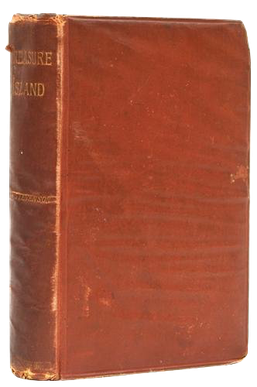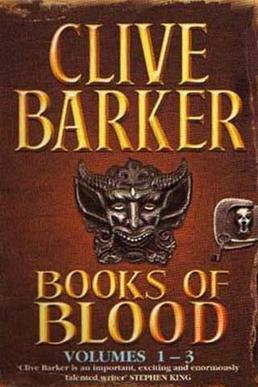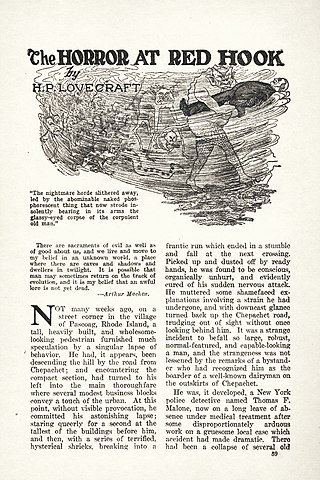
Treasure Island is an adventure and historical novel by the Scottish author Robert Louis Stevenson. It was published in 1883, and tells a story of "buccaneers and buried gold" set in the 1700s. It is considered a coming-of-age story and is noted for its atmosphere, characters, and action.

Long John Silver is a fictional character and the main antagonist in the 1883 novel Treasure Island by Robert Louis Stevenson. The most colourful and complex character in the book, he continues to appear in popular culture. His missing leg and parrot, in particular, have greatly contributed to the image of the pirate in popular culture.

House of 1000 Corpses is a 2003 American black comedy horror film written, co-scored, and directed by Rob Zombie in his directorial debut, and the first film in the Firefly film series. It stars Sid Haig, Bill Moseley, Sheri Moon, Karen Black, Rainn Wilson, Chris Hardwick, Tom Towles, Erin Daniels, Jennifer Jostyn, Walton Goggins, and Dennis Fimple in his final role. The plot centers on a group of teenagers who are kidnapped and tortured by a psychopathic family during Halloween after traveling across the country to write a book.

Zombi 2 is a 1979 English-language Italian zombie film directed by Lucio Fulci. It was adapted from an original screenplay by Dardano Sacchetti to serve as a sequel to George A. Romero's Dawn of the Dead (1978), which was released in Italy under the title Zombi. It stars Tisa Farrow, Ian McCulloch, and Richard Johnson, and features a score by frequent Fulci collaborator Fabio Frizzi. Frizzi's score has been released independently of the film, and he has performed it live on tour.

Muppet Treasure Island is a 1996 American musical swashbuckler comedy film directed by Brian Henson and the fifth theatrical film featuring the Muppets. Adapted from the 1883 novel Treasure Island by Robert Louis Stevenson, similarly to its predecessor The Muppet Christmas Carol (1992), the key roles were played by live-action actors, with the Muppets in supporting roles. The film stars Muppet performers Dave Goelz, Steve Whitmire, Jerry Nelson, Kevin Clash, Bill Barretta, and Frank Oz in various roles, as well as Tim Curry as Long John Silver and introduces Kevin Bishop as Jim Hawkins.

Books of Blood is a series of six horror fiction anthologies collecting original stories written by British author, playwright, and filmmaker Clive Barker in 1984 and 1985. Known primarily for writing stage plays beforehand, Barker gained a wider audience and fanbase through this anthology series, leading to a successful career as a novelist. Originally presented as six volumes, the anthologies were subsequently re-published in two omnibus editions containing three volumes each. Each volume contains four, five or six stories. The Volume 1–3 omnibus contained a foreword by Barker's fellow Liverpudlian horror writer Ramsey Campbell. Author Stephen King praised Books of Blood, leading to a quote from him appearing on the first US edition of the book: "I have seen the future of horror and his name is Clive Barker."
"The Man in the Black Suit" is a horror short story by American writer Stephen King. It was originally published in the October 31, 1994 issue of The New Yorker magazine.

Tales from the Hood is a 1995 American black horror comedy anthology film directed by Rusty Cundieff and starring Corbin Bernsen, Rosalind Cash, Rusty Cundieff, David Alan Grier, Anthony Griffith, Wings Hauser, Paula Jai Parker, Joe Torry, and Clarence Williams III. The film presents four short urban-themed horror stories based on problems that affect the African-American community: police corruption, domestic abuse, racism, and gang violence. These are presented within a frame story of three drug dealers buying some "found" drugs from an eccentric and story-prone funeral director.

"The Devil and Tom Walker" is a short story by Washington Irving that first appeared in his 1824 collection Tales of a Traveller, in "The Money-Diggers" part of volume II. The story is very similar to the German legend of Faust.

The Hook, or the Hookman, is an urban legend about a killer with a pirate-like hook for a hand attacking a couple in a parked car.

George Buza is an American and Canadian actor who is best known for voicing Beast in X-Men: The Animated Series and X-Men '97.

"The Horror at Red Hook" is a short story by American writer H. P. Lovecraft, written on August 1–2, 1925. "Red Hook" is a transitional tale, situated between the author's earlier work and the later Cthulhu Mythos. Although the story depicts a sinister cult, this cult offers a conventionally occult devil-worshipping threat, rather than the cosmic threat depicted in his later work. Living in poverty in the slum of Red Hook at the time of writing, Lovecraft was at this time urgently attempting to widen his markets in the pulp magazines. By having an unusually proactive Irish New York police detective as his protagonist, he hoped for a swift sale to a detective pulp, which would have opened up a new market other than his usual Weird Tales magazine. He did not get such a sale, and had to fall back on Weird Tales. "Red Hook" was thus first published in the January 1927 issue of Weird Tales.

The Zombie is a fictional supernatural character appearing in American comic books published by Marvel Comics. The character was created by writer Stan Lee and artist Bill Everett for the standalone story "Zombie" in the horror-anthology comic book Menace #5, which was published by Atlas Comics, a forerunner to Marvel. The character later became well known for starring in the black-and-white horror-comic magazine series Tales of the Zombie (1973–1975), usually in stories by Steve Gerber and Pablo Marcos.

The Vault of Horror is a 1973 British anthology horror film directed by Roy Ward Baker, and starring Terry-Thomas, Dawn Addams, Denholm Elliott, Curd Jürgens, Tom Baker, Michael Craig, Terence Alexander, Glynis Johns, Mike Pratt, Robin Nedwell, Geoffrey Davies, Daniel Massey and Anna Massey.

Satan's Slave is a 1980 Indonesian supernatural horror film directed by Sisworo Gautama Putra. The plot follows a wealthy family who have stopped practicing their Muslim faith and are tormented by the undead after their mother dies. It has achieved cult status among fans of Asian horror films, principally because it has been unavailable for many years, except as an obscure Japanese VHS pressing with no English subtitles. In 2006, Brentwood Home Video, a specialist US label, released an uncut print on DVD for retail release as part of its Eastern Horror series. Among Western fans, it is notable for being one of the few classic horror films to substitute Christian or Buddhist themes for Muslim beliefs.

The Princess and the Pirate is a 1944 American comedy film directed by David Butler, and starring Bob Hope and Virginia Mayo. Based on a story by Sy Bartlett, the film is about a princess who travels incognito to elope with her true love instead of marrying the man to whom she is betrothed. On the high seas, her ship is attacked by pirates who plan to kidnap her and hold her for ransom, unaware that she will be rescued by the unlikeliest of knights errant. Produced by Samuel Goldwyn, The Princess and the Pirate received Academy Award nominations for Best Art Direction and Best Music Score.

Neverland is a 2011 fantasy television miniseries that aired on the Syfy network on December 4 and 5, Sky Movies on December 9, and Zee Cinema (India) on December 16. It was written and directed by Nick Willing. It is a prequel to the story of Peter Pan.

Campfire Tales is a 1997 American anthology horror film directed by Matt Cooper, Martin Kunert, and David Semel. The film is made up of three individual short segments that are presented in an overarching narrative, told by a group of friends around a fire after they crash their car in the woods. It stars James Marsden, Christine Taylor, Amy Smart, and Ron Livingston.

Grave Robbers is a 1989 Mexican slasher film written and directed by Rubén Galindo Jr., and co-written by Carlos Valdemar. Agustín Bernal stars as an undead Satanist who, after being accidentally awakened by grave robbers played by Erika Buenfil, Ernesto Laguardia, German Bernal, and María Rebeca, sets out to bring about Armageddon by impregnating a virgin with the Antichrist.

















